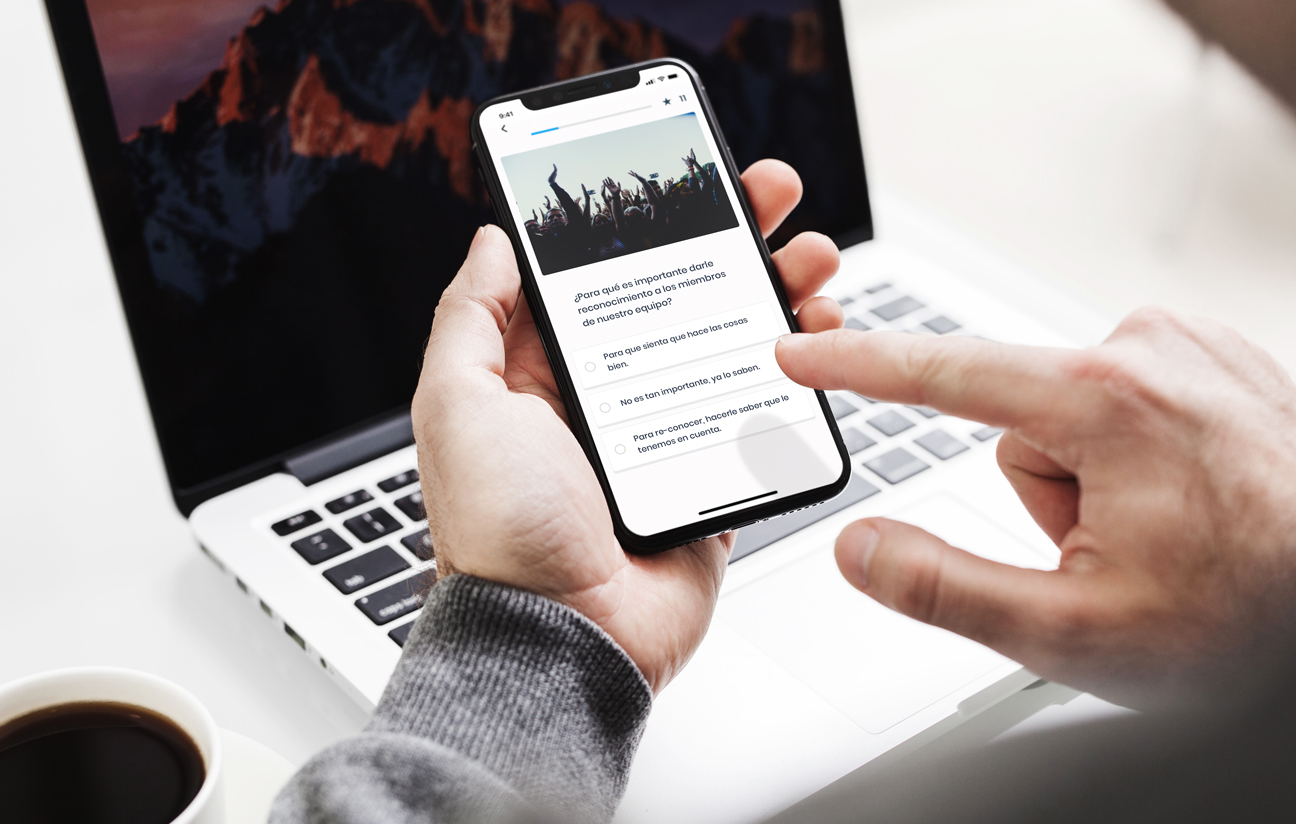This study developed by Gallup found that 87% of millennials and 69% of non-millennials consider career development to be as substantial as salary.
Continuous learning is a key element in the evolution of both the company and the people who make it up.
We know that training and learning are important but… how can they be implemented in companies?
One of the most demanded and popular options in recent years within the corporate environment is “microlearning”.
Companies such as Vodafone, L’Oréal or Sacyr are already putting it into practice with our help.
What is microlearning?
Microlearning is an educational methodology in which contents are taught in small doses.
Each one of them has a clear and defined objective, and the time spent training should be short, at most 10 minutes in total.
They are usually presented in digital format via web or Apps, which makes them even easier to use as they can be accessed anywhere and at any time.
It is considered to be the alternative to the traditional and face-to-face training, characterized by being long, dense and difficult to digest.
What are the advantages?
1. Time optimization.
As the saying goes, “time is money”.
Even more so if we’re talking about professional development.
Microlearning makes it possible to optimize the time dedicated to training by dividing it into short daily sessions.
By presenting the information as pills, it is easier to assimilate and remember, therefore, the retention rate is much higher.
This study carried out by the University of Dresden, proved this. They found out that the length of training influenced its effectiveness.
To sum up: they created three different working groups which were presented with the same content divided in different ways.
Group A received it organized in 2 sections, group B in 4 and group C in 16.
At the end of each training block they were given a questionnaire.
As a result it was shown that group C got better marks in terms of correct answers and speed of response.
This also allows that both learning and the implementation in the development of the work to occur simultaneously.
2. Greater engagement.
In the digital era, consumer habits have changed.
Our attention deficit is huge, so we want fast and to the point content.
We see this in our day-to-day life: videos and podcasts of no more than 10 minutes, articles that can be read in 4 minutes…
This is present in any field, including that of training.
We need the content to hook us, not only in terms of duration, but also in terms of quality.
If it’s boring or visually poor, our attention is diverted to something else.
3. Savings in time and money.
The online format minimizes the training costs associated with face-to-face training as it removes them.
In addition, the time spent creating the digital sessions is an investment since the content is easily reusable.
4. Adaptability of the contents.
As they are divided into modules, it is much easier to modify them in order to personalize or adapt them to the public and to possible changes in the subjects.
How do we integrate microlearning with our clients?
We use microlearning to ease the up-down knowledge transfer in the companies we work with.
We achieve this with training modules that we call “trainings” in our App.
This allows us to distribute knowledge and information in an agile and gamified way to any person within an organization.
The content is presented in a multiple choice question format, the typical multiple choice test!
Why this format? Because questions are the easiest way to transmit knowledge.
That’s why they are our basic working unit, as explained in this post.
We have been successfully implementing this system for 4 years, achieving in our clients:
- A 10 times increase in the transmission of tacit knowledge*
- 5 times more engagement than learning systems (LMS)
- A customer satisfaction index of 9.3/10
*Tacit knowledge is the compilation of experiences, learning and learned habits that we accumulate along our path.
How do trainings work?
Very easy! They are completely configurable and customizable.
They can be adapted to the training needs of each company and even of each team within it.
The questions to be included in the training are created, the duration and the people you will address are chosen and… voilà!
Here’s an example to make it easier to see:

This training has a total of 25 questions and will be available for one week to all the captains at Zapiens.
This means that they will have 5 questions available every day, that is, they will learn bit by bit, but in a consistent way.
This means that they will have 5 questions available every day, that is, they will learn bit by bit, but in a consistent way.
And once a training is over… What happens?
Well… Data everywhere!
For each training, analytics of the learning evolution are generated.
With them you can find out which questions have been answered correctly and which ones have not, the categories with the highest scores, the activity level…
If you’re a fan of metrics, this is where you can get the most of it and turn your company’s knowledge into something tangible and measurable.

